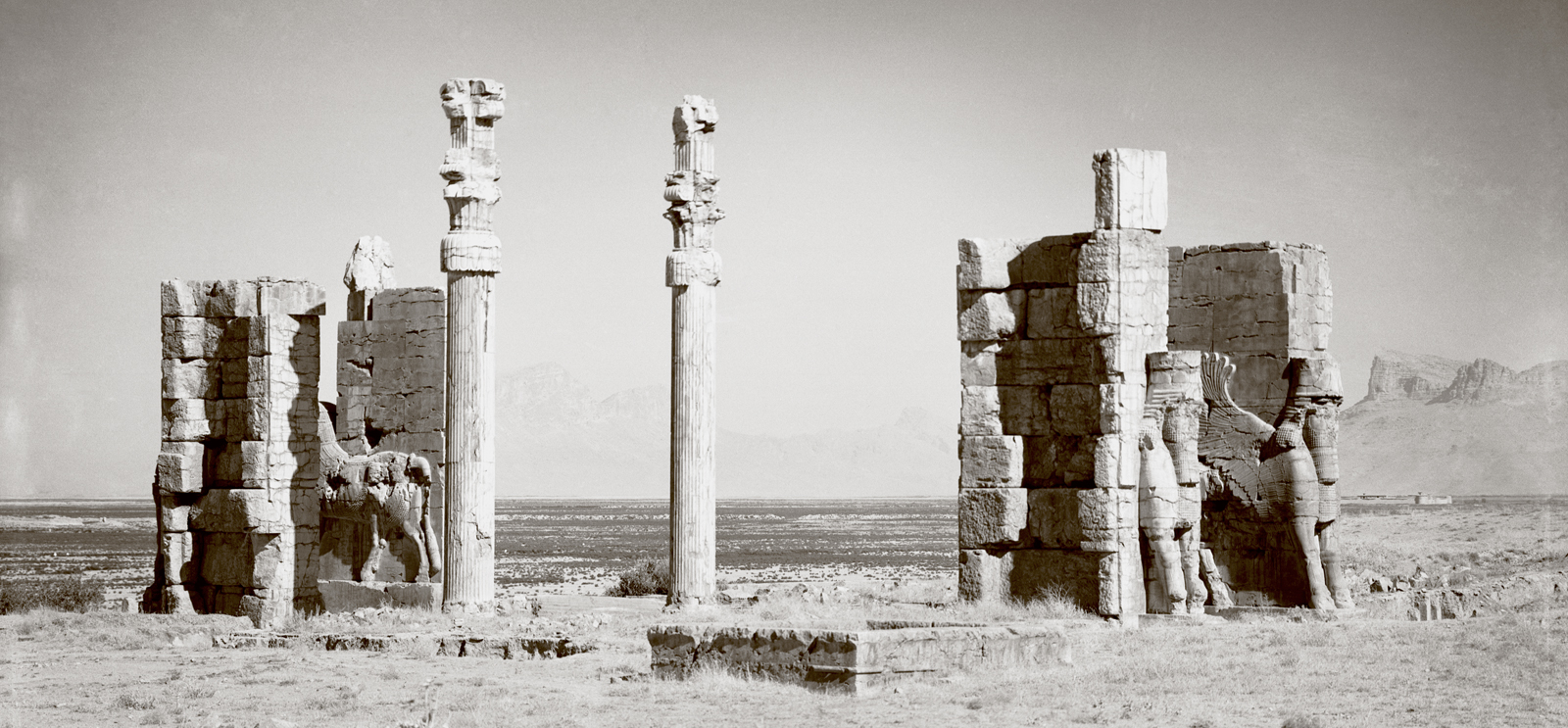
(Oriental Institute of the University of Chicago)
In the 1930s Oriental Institute archaeologists used photography to capture the history and grandeur of Persepolis.
When Oriental Institute archaeologists Ernst Herzfeld and Erich Schmidt directed excavations at Persepolis, one of the great dynastic centers of the Achaemenid Persian Empire (550–330 BC), photography offered a way to document their findings while capturing the grandeur of the ancient site. Between 1931 and 1939, the team amassed a total of 3,700 photographs, the negatives of which are now housed in OI museum archives.
Field Negative P-1174 (above), taken in 1939, depicts the Gate of All Lands, the formal entrance to the terrace at Persepolis. The image, on display in the OI’s current exhibit Persepolis: Images of an Empire, is valuable both for the record it provides of the historic site and for its sheer beauty.
It tells us something about the archaeologists too. “The boundaries between art and science and documentation are easily blurred,” says OI curator Kiersten Neumann, also the exhibition’s curator. Neumann is researching the role of photography in early excavations of ancient sites and says that archaeologists of this era were more interested than many of their modern-day counterparts in capturing their personal responses to the art and architecture they encountered.
“They were explorers,” says Neumann. “They were imaginative and thought of possibilities rather than just hard cold facts.” As a result, the photographs taken during the expedition have an aesthetic force. The images evoke a sense of wonder that, she says, may have contributed to Western perceptions of the East as exotic and mysterious.
Persepolis: Images of an Empire is open through September 11, 2016.
